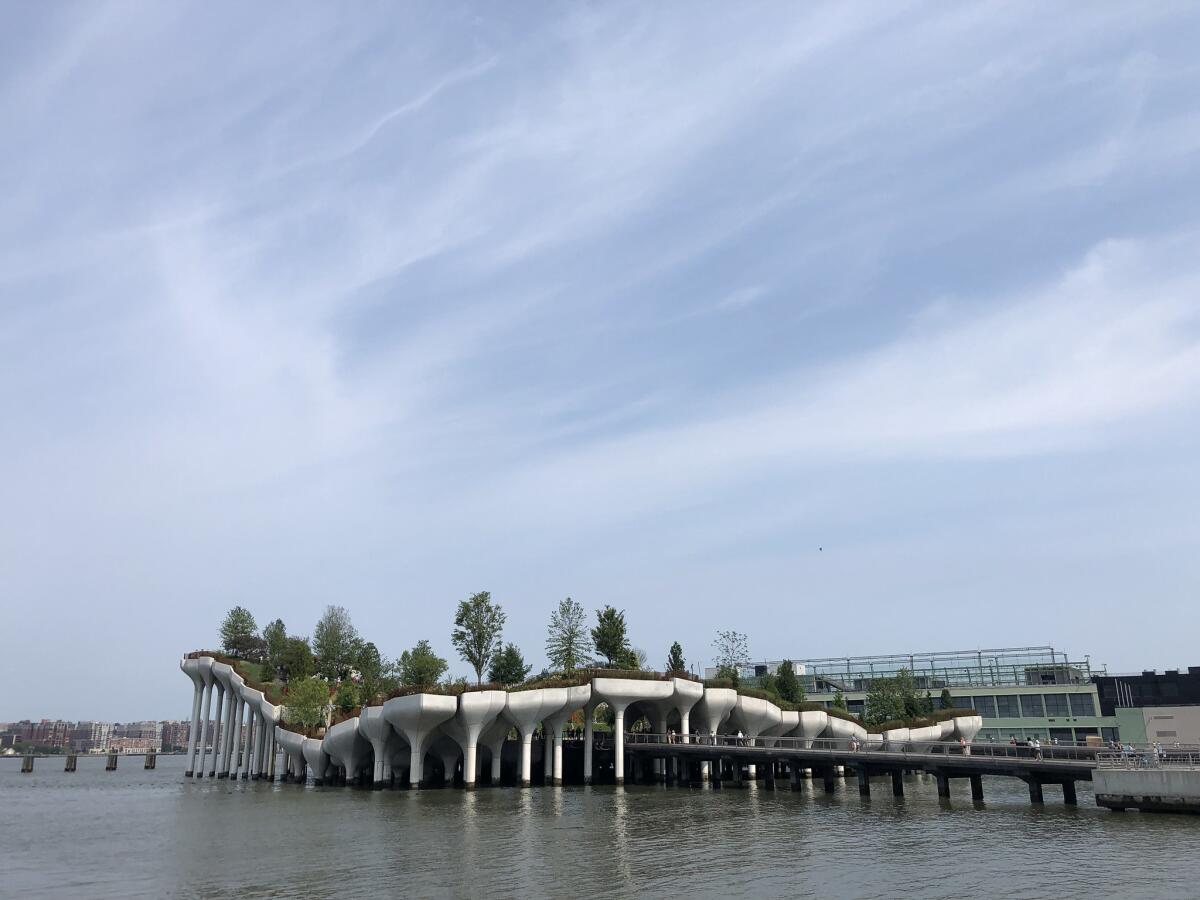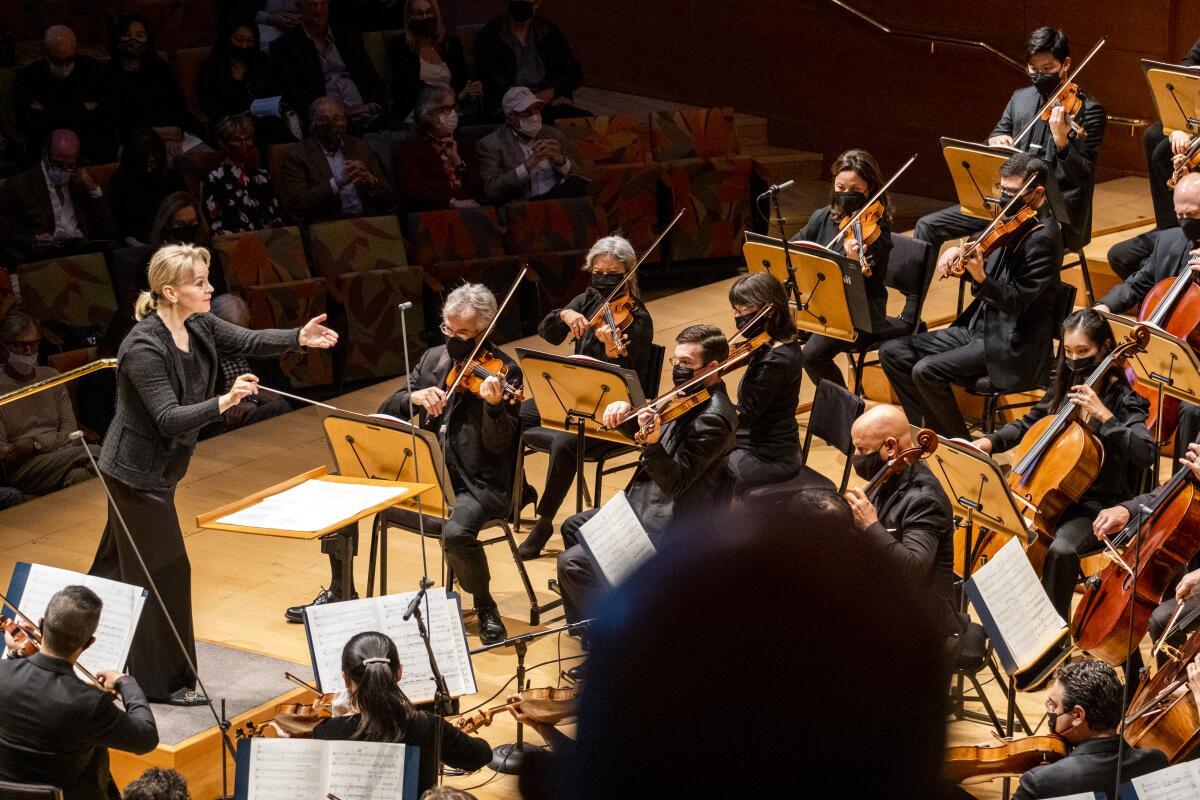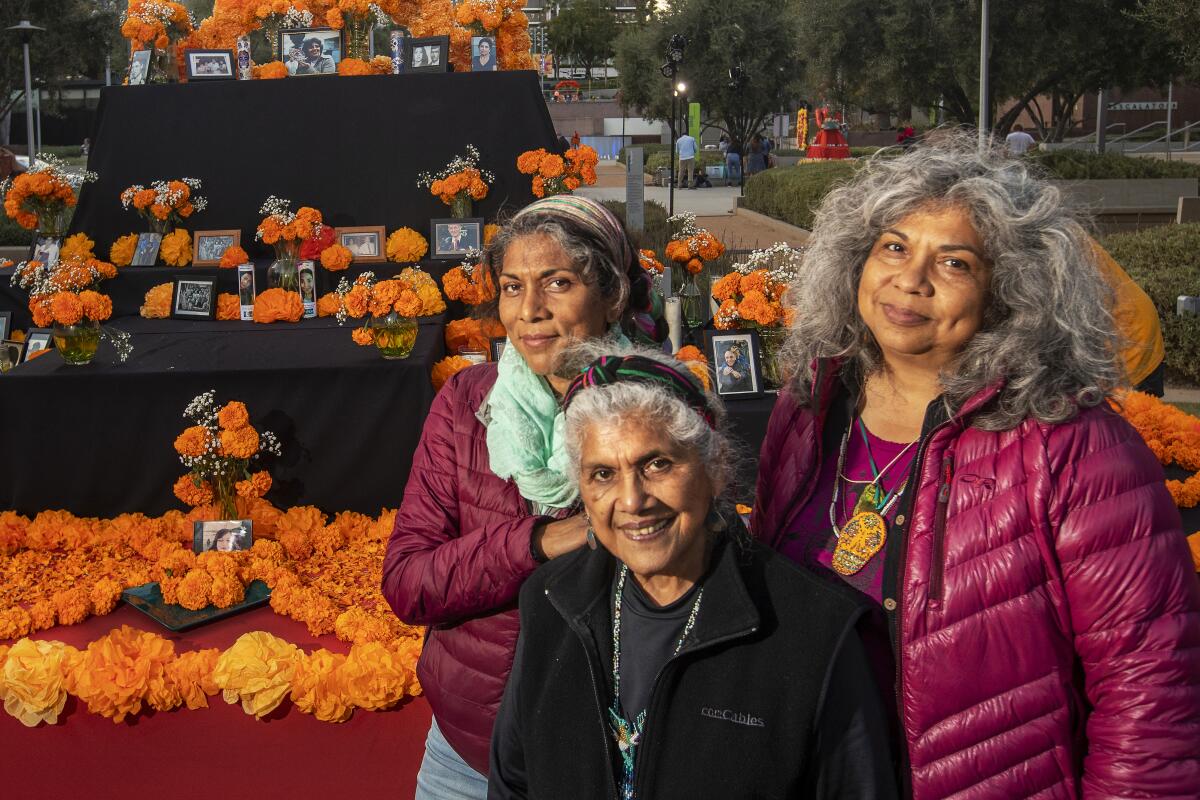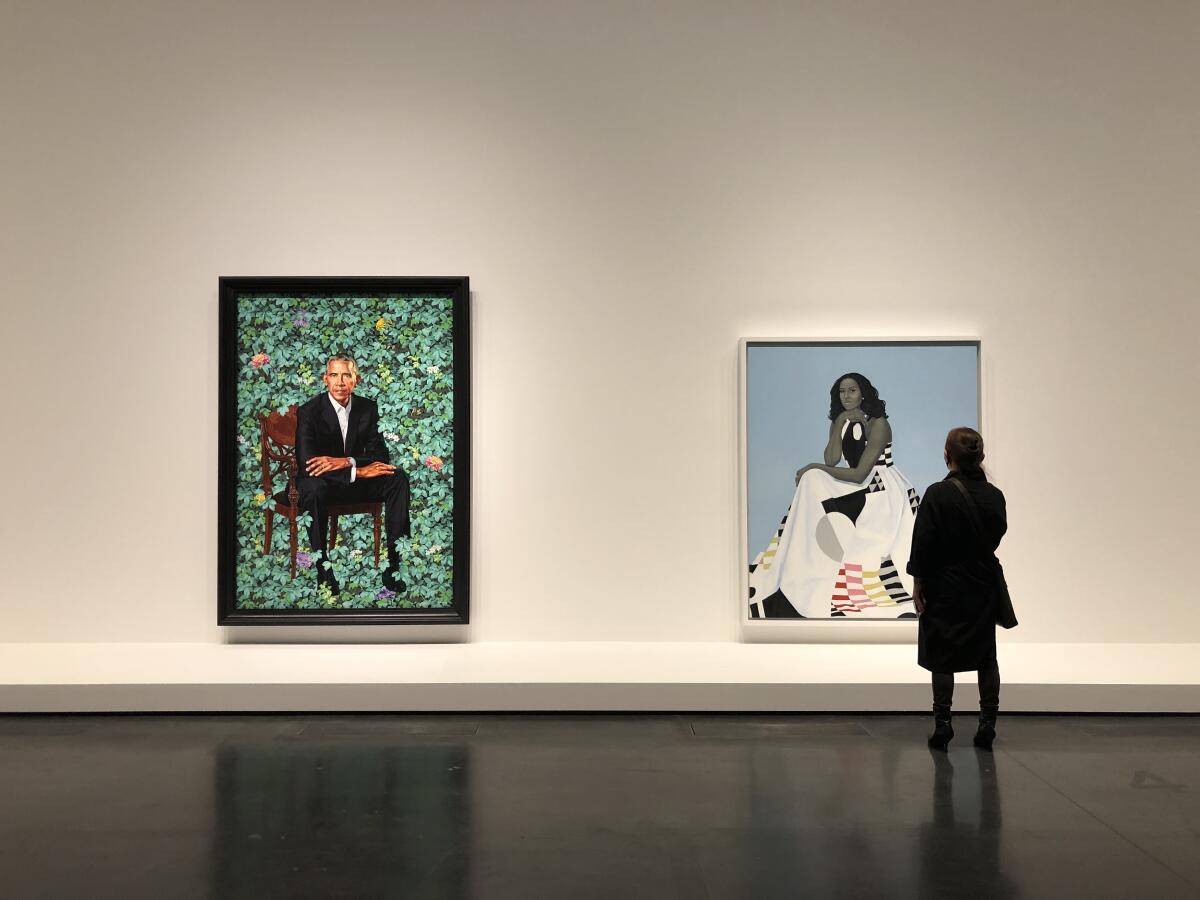Newsletter: How jailhouse design is more progressive than UC Santa Barbara’s ‘dormzilla’
- Share via
Why hello, fellow kids! I love me some Lizzo as Baby Yoda, but Steve Buscemi won Halloween this year for dressing up as his own meme. I’m Carolina A. Miranda, arts and urban design columnist at the Los Angeles Times, with your weekly culture newsletter — in which we cover everything from prison dorms to cheese.
Dormzilla’s natural-light problem
Question: What does it take to make architecture go viral?
Answer: Design an 11-story mega-dorm in which an estimated 94% of the dormitory spaces have no access to windows, fresh air or natural light.
That’s the story of Munger Hall at UC Santa Barbara.
The university, facing a severe housing crunch, has accepted a take-it-or-leave-it proposal from 97-year-old billionaire Charles Munger, who has designed and aims to partially fund this travesty.
As I noted in a column earlier this week, the idea is a bad one. Really bad. So bad, in fact, that Los Angeles architect Dennis McFadden stepped down from his longtime post on the university’s design review committee and described the project as “unsupportable from my perspective as an architect, a parent and a human being” in a blazing resignation letter.
He later wrote an opinion piece for The Times on the proposed design he called “dangerous.” Student housing should be a place where “life can unfold in multiple ways, places of emotional refuge that raise the spirit and dignify the individual,” he wrote. “Munger Hall is not one of those places.”
Now a group of six architectural historians at the university have lunched a petition in opposition to the project. (At the time of this writing, it had garnered more than 1,700 signatures.) It reads, in part: “Just because Munger Hall seeks to address a serious crisis is no justification for investing $1.4 billion in a monstrous project based on untested and, in many respects, highly disturbing design principles.”
Make the most of L.A.
Get our guide to events and happenings in the SoCal arts scene. In your inbox every Monday and Friday morning.
You may occasionally receive promotional content from the Los Angeles Times.
Naturally, the comparisons to prison design have been rife.
It can seem trivial to compare a poorly conceived dorm, one stocked with a host of amenities, in which students are free to come and go, to architecture that is explicitly designed to be controlling and punitive. (Architecture, incidentally, that is disproportionately wielded against people of color.) But since we’re going there, let’s go there.
This week, I spent some quality time perusing the third edition of the “Jail Design Guide.” Published in 2011, it’s a broad set of design recommendations established by the National Institute of Corrections, a division of the U.S. Department of Justice, for the design of new jails or jail renovation projects.
It had interesting things to say about access to daylight. In the living areas, it notes that, under ideal conditions, “cells and dayrooms should have exposure to natural light. Natural light is valuable in that it contributes to good physical and mental health.” The report even discusses providing access to daylight, when feasible, in “administrative segregation” units — otherwise known as solitary.
In jail design, access to windows is mitigated by a range of security concerns, so in many cases, daylight is provided through indirect means, such as skylights or clerestory windows. But the point is that daylight is a concern.
And it should be a concern for UC Santa Barbara’s leadership. Because the dorm, as proposed, is a horror show. What exactly would it be like to inhabit this dorm during one of California’s regular rolling blackouts?
Carl Allen, who runs a popular urbanism account on TikTok, noted that there are ways of achieving density that don’t sacrifice air and daylight. These can come through a building’s form (tall and slender or long and narrow) or through the use of strategically placed courtyards.
“In this context, Munger Hall’s floor plan is especially dystopian,” he said. “And it doesn’t have to be that way.”
He is right. If a university — of all places — is going to experiment with architecture, it should be in favor of design that is better than basic jail design, not worse.
Related: Fred Bernstein at Architectural Record has an interview with Munger about the project, and it is full of doozies, starting with: “I expect these buildings to sprout up all over America.” God help us all.
And Alexander Luckmann, a graduate student at UCSB, reflects on how Munger’s philanthropy reflects the creep of privatization on public space — comparing it to the Barry Diller-funded Little Island in Manhattan. “Little Island lets a billionaire dictate what kind of public space a city should have, and where it should be,” he wrote. “Munger Hall is the ugly West coast twin of Little Island.”

Classical notes
Since we’re on the subject of the California coast, it’s a good time to turn to the work of Kaija Saariaho. The Finnish composer’s new work, “Vista” — which recently had its U.S. premiere courtesy of the L.A. Phil — was inspired by a drive she took from L.A. to San Diego. The piece captures the nuances of the landscape, writes classical music critic Mark Swed: “While ‘Vista’ is essentially an abstract study in the transformation of an ever-shifting musical landscape of melodic shapes, textures, timbres and harmonies, an inevitable sense of foreboding pervades its off-heated atmosphere.”

On and off the stage
Theaters may be reopening, but Times theater critic Charles McNulty says there are still virtual offerings worth logging on for. Namely, Culture Clash’s “Chavez Ravine: In 9 Innings,” presented as part of the Center Theatre Group’s Digital Stage, which reimagines the troupe’s play about the razing of Mexican American neighborhoods to make way for Dodger Stadium for the digital sphere. “This production is as much a love letter to Center Theatre Group, which has supported this work through many iterations,” writes McNulty, “as it is a history lesson for our all-too-forgetful city.”
Enjoying this newsletter? Consider subscribing to the Los Angeles Times
Your support helps us deliver the news that matters most. Become a subscriber.
Chiara Atik’s “Poor Clare” takes the Middle Ages tradition of the saint’s play (which were about religious miracles) and turns it into “an offbeat comedy millennials can believe in,” writes McNulty. And “miracle of miracles, it almost works.” The production, which is premiering at the Echo Theater Co. as a production of Atwater Village Theater under the direction of Alana Dietze, lacks suspense, he notes, but “the charmingly daffy anachronistic dialogue compensates for a plot that feels like a fait accompli.”
The Times’ Ashley Lee writes about why it matters that Cynthia Erivo has been cast as Elphaba in the film adaptation of “Wicked.” The character is, at heart, “an activist who fights for the oppressed and is discriminated against because of the color of her skin,” writes Lee. Yet, over the years, the role has overwhelmingly gone to white actors. “Casting a Black actor as Elphaba is long overdue, and Erivo is more than suited to play her.”

Meanwhile, behind the scenes: Williamstown Theatre Festival artistic director Mandy Greenfield resigned this week, following allegations of a toxic work environment and repeated safety hazards described in a February letter to leadership from 75 artists and others affiliated with the festival. Replacing her as interim artistic director is Jenny Gersten. A Times investigation for which Ashley Lee interviewed 25 current and former festival staffers, documented accidents, 16-hour days, an inadequate system for reporting safety issues and a culture that kept workers from speaking out for fear of professional repercussions.
Art report
The Times’ Deborah Vankin checks in with LACMA to see where things stand on its $750 million building project. Fossil finds have resulted in months of construction delays, and the museum’s fundraising on the project, which is centered on architect Peter Zumthor’s building that will straddle Wilshire Boulevard, stands at $679 million — just $24 million more than where it stood a year ago. Moreover, the museum recently took on additional bond debt to finance construction, bringing total debt to a rather staggering $822 million. Director Michael Govan tells Vankin that things have picked up now that the pandemic is retreating: “There’s huge, positive momentum that’s returned, post-reopening.”
Let’s hope so. As I’ve reported in the past, the additional bond debt is going to make the museum’s debt-to-assets ratio groan under the weight: that’s $822 million in debt against the museum’s nearly $1.1 billion in assets, as reported in IRS 990 tax forms filed in 2020. That’s a debt-to-asset ratio of more than 78%. Even when you adjust that figure to count the annual subsidy LACMA receives from the county as additional endowment, the debt-to-asset ratio nonetheless reaches 50%. And as a professor of nonprofit financial management told me last year, ideally you want that ratio to reside below the 40% mark.
Which means LACMA better pray that the building stays on budget.

Want more? Arts writer Hunter Drohojowska-Philp had a good state-of-LACMA in Alta magazine.
Being buchona vibes
Beauty influencer Jenny 69 recently went viral for her corrido tumbado single “La 69.” But I was more intrigued by her aesthetic: a look known as “buchona,” a slang term that emerged as a way to describe the flamboyant girlfriends of 21st century narcos from Sinaloa but that has since evolved to include women who have active roles in the cartels or simply adopt the buchona style. As with anything narco, the defining trait is excess: designer labels, exaggerated hourglass figures and gobs of bling. It’s a look that fuses rural traditions from northern Mexico with Kim Kardashian influencer culture — and thanks to the internet, it is going global.
Need more buchona? Here’s a Spotify playlist. (Hat tip to Josh Kun for the link!)

Speaking of internet aesthetics, the New York Times’ Amanda Hess has a terrific piece on Mark Zuckerberg and Meta: “The aesthetics of the metaverse, with its ghastly translucent holograms, evoke the specter of death. Its schedule of activities reads like an advertisement for a virtual retirement community where isolated millennials can live out their final days.” Not terrifying at all.
Honoring the dead
Day of the Dead was celebrated earlier this week and my colleague Daniel Hernandez profiled Ofelia Esparza, one of the city’s most renowned altar makers. At 89 years of age, Esparza remains energetically committed to preserving the meaning of this increasingly commercialized celebration: honoring ancestors. “Doing the ofrenda itself is, for me, the main event,” she says.

ICYMI, The Times created a digital community altar. It has received hundreds of submissions.
Holiday season
The holiday frenzy has landed, and The Times arts team is here to lend a hand with the shopping. Christopher Knight comes through with 11 fantastic ideas for coffee table book gift ideas, including a compendium of African artists, a catalog devoted to the works of the late Hung Liu and a cookbook inspired by data leaks. Ordering now!
Jessica Gelt and Craig Nakano in the meantime, combed the various museum gift shops for some of the best shopping bets. Think: artist jars, California mugs, a Yayoi Kusama infinity scarf and some lovely ceramics from People’s Pottery Project.
My gift guide is just six items, but it involves a stylish butaca chair, an artsy cobija and a plastic dinosaur. In other words, pure class!
Check out the guide’s main page for many more wonderful gift ideas — including all things made-in-L.A. and the best gifts for stoners.
Essential happenings
Matt Cooper, as usual, has all the happenings, including a dance work by the L.A.-based dance troupe Ate9 and a play by Inda Craig-Galván about a pair of Black women who form an unlikely alliance to fight racism.
He also comes through with an essential museum guide, which includes the re-installation of the Huntington Library’s American art galleries, centered on the idea of “Borderlands,” and the unveiling of Kehinde Wiley’s “A Portrait of a Young Gentleman,” a newly commissioned piece that responds to Gainsborough’s “The Blue Boy.”
And because Wiley’s work is currently bookending Los Angeles: Also noteworthy are the portraits of Barack Obama and Michelle Obama that have landed at LACMA and go on public view starting Sunday. I was excited to see them at the press preview this week because I missed the portraits when I was trotting through the National Portrait Gallery in Washington, D.C., in July.
The paintings — by Wiley (who painted the president) and Amy Sherald (the first lady) — have been widely reproduced in the media, but seeing them in person gives you appreciation for all the details that do not come across on an smartphone-sized screen. There is certainly their scale, but also the ways in which the artists were able to capture the way these figures bore the weight of their roles in their gazes.
They are a perfect pairing with “Black American Portraits,” which was curated by LACMA’s Christine Y. Kim and Liz Andrews and is installed in the gallery right next door. It’s an ebullient meeting of Black historical figures — sailors, artists, dandies, jurists, politicians — interspersed with characters that emerge from artist imaginations. Do not miss.

Passages
Mark Roglán, an expert in 19th century Spanish art who led the Meadows Museum at Southern Methodist University in Dallas, is dead at 50.
Julie Green, an artist who memorialized the last meals of death row inmates on ceramic plates, has died at the age of 60.
Ivy Nicholson, a top model who became one of the first superstars in Andy Warhol’s Factory, is dead at 88.
Pat Martino, an acclaimed jazz guitarist who could veer from bop to Eastern music, and who had to learn to replay the guitar after suffering from an aneurysm, has died at 77.
Brazilian pianist Nelson Freire, who was known for his finesse as a musician, as well as his indifference to the trappings of success, has died at 77. “There is a big difference between music and the music business,” he said in the early 1990s. “It’s a completely different language, and when I get too involved in talking it, I get a little bit sick. As for talking about myself, it actually bores me.”
In other news
— Max Pearl has a great report on Miguel Fernández de Castro’s border-inspired works: “By cutting through the melodramatic or moralizing attitudes that prop up clichés about the border region, he forces viewers to question the story lines imposed on it by people who don’t live there.”
— I’m digging the wry humor in Ellsworth Kelly’s postcard collages.
— William Poundstone rounds up the recent acquisitions by the Huntington Library, including works by painter Thomas Cole, photographer Manuel Álvarez Bravo and quilt-maker Mary Lee Bendolph.
— A look at the attempt to create some sort of influence-peddling safeguards around Hunter Biden‘s gallery show in New York.
— The Chargers are settling into L.A.: the team will construct a new headquarters and training facility in El Segundo, designed by Gensler’s Ron Turner.
— What rising sea levels spell for Venice, Italy: disaster.
And last but not least ...
The TikTok account devoted almost entirely to the act of slicing cheese.
The biggest entertainment stories
Get our big stories about Hollywood, film, television, music, arts, culture and more right in your inbox as soon as they publish.
You may occasionally receive promotional content from the Los Angeles Times.




